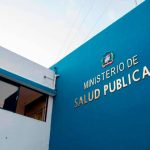Dominican Government plans two major, controversial dams

Santo Domingo.- Two major but controversial hydroelectric projects are expected to dominate heated disputes among environmentalists and developers, one of which even led an entire city to shutter its doors in protest in 2002.
President Danilo Medina plans to revisit the project to build a dam at Madrigal (central) at a cost of US$300 million, and would call for tenders next week.
For the studies on the project "Expanding Haina River’s Water Collection" which would solve Greater Santo Domingo’s water supply problem for the next 20 years, the government allocated RD$300 million in the 2013 budget.
Santo Domingo water utility (CAASD) director Alejandro Montas said the dam would supply seven cubic meters per second and would be "a generous aqueduct because it wouldn’t have an electricity cost." He added that the construction includes a treatment plant will solve the problem of the capital’s waste water.
In 1984 the Madrigal project led then president Salvador Jorge Blanco and PRD party colleague and Senate president Jacobo Majluta into a heated confrontation, and which scrapped the hydroelectric.
Jarabacoa
In Jarabacoa, La Vega meanwhile, the representatives of numerous organizations gathered in the City Council and decided to start a struggle plan to prevent the rerouting of the North Yaque River to pave the way to build the hydroelectric dam Bejucal-Manabao-Tavera, which in 2002 spurred the entire mountain city to shutter its doors in protest.
According to the survey conducted in the area, the river’s course would be rerouted at the entrance at the village Los Dajaos, through a tunnel of around six kilometers to the village Manabao.’’
According to diariolibre.com.do, technicians working on the hydroelectric project are already staying in hotels and homes of Jarabacoa.
During the session, the City Council issued a resolution to ban rerouting the Yaque, which in its view would jeopardize tourism, agriculture, livestock, and the environment, in addition to lowering property values in tourism real estate.

















